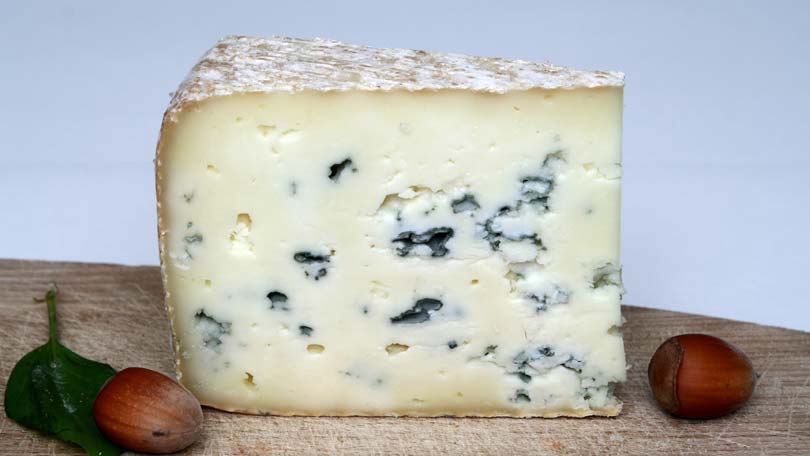Blue cheese is one of those misunderstood cheeses. It really doesn’t get its fair shake it the world. Its crumbly sour, salty taste makes blue cheese either an acquired taste, or a taste for only tolerant palates. There is something about the veins of mold (which gives it that blue or green coloration) that simply turns people off from even tasting the cheeses. While cheeses are designed to have mold and other natural cultures, Americans in particular don’t like to see their mold when they are eating it.
Blue cheeses technically encompasses more than just the well known crumbly block of cheese with the moldy specks. Roquefort and gorgonzola are family members of the king of the cheeses. Most people simply don’t refer to any other cheeses as blue.
For those who base their dietary desires on aroma, this cheese is certainly not high on their list of favorites. The pungent smell of blue cheese is often enough to keep children in particular from trying it, and thus they can never fully enjoy the actual goodness and unique flavor that some people find in this misunderstood cheese.
The cheese was actually an accidental discovery. Cheese that was left to age was left in a cavern that contained the appropriate moisture levels for growing the mold. It was a full-size hit. Since then, the growing of the exact right mold has become an art form and new technology has enhanced the ability to create the cheese to a perfect blend of cheese and blue mold. Most of the time the caverns that have been used for centuries are still stocked with cheese waiting for the perfect veins of mold to grow.
Blue cheese can be added to almost anything. With its naturally occurring salty flavors, it is best not to add any additional salt to a dish with this cheese. Cheeseburgers, salads, and dressings are all known to be the cheese’s natural best friends. But many enthusiasts of the cheese are putting it on more than just crackers. Melting it into soups, adding it to pasta dishes, and creating very special cheese and chicken or turkey specialty wraps have become quite popular for fans of the cheese.
When utilizing blue cheese it is usually recommended that it either be offered on the side, or there is an alternative available for those who are disinterested in the cheese. While a bit misunderstood, there are a vast many who truly don’t like the taste. It is one of those foods that people either love or hate, and in many circumstances, your guests may feel a bit off to the culinary side if they lack the flair for the cheese.
Of course, we all know that bacon compliments the cheese very well, and using the cheese and bacon to make a steak dinner that cheese enthusiasts will die for can change the mind of a disinterested member of the blue cheese party. Usually tasting the cheese as an addition to the meal or recipe is a better introduction than simply handing the block over to a resistant taster.
On the upside, this is a cheese that once you develop a flavor for, there are limitless possibilities. They even have specialty cookbooks based on the famous mold. This means that those who like the cheese but aren’t one to eat it straight from the packaging are likely to become more involved in its culinary offerings.
Using sweet pears, some healthy greens, and a little crumbled blue cheese makes a sweet pear salad that is amazingly delicious even for those who aren’t crazy about the cheese. By using a high amount of the pear and a small amount of the cheese, you can get the resistant taster to try just a bit of what may become a favorite among the salad world. Again, this should only be done publicly when there is an alternative for those who simply can’t get past eating the mold. With everything that blue cheese can create, perhaps it’s time for those who never caught the thrill to give it a second try.






